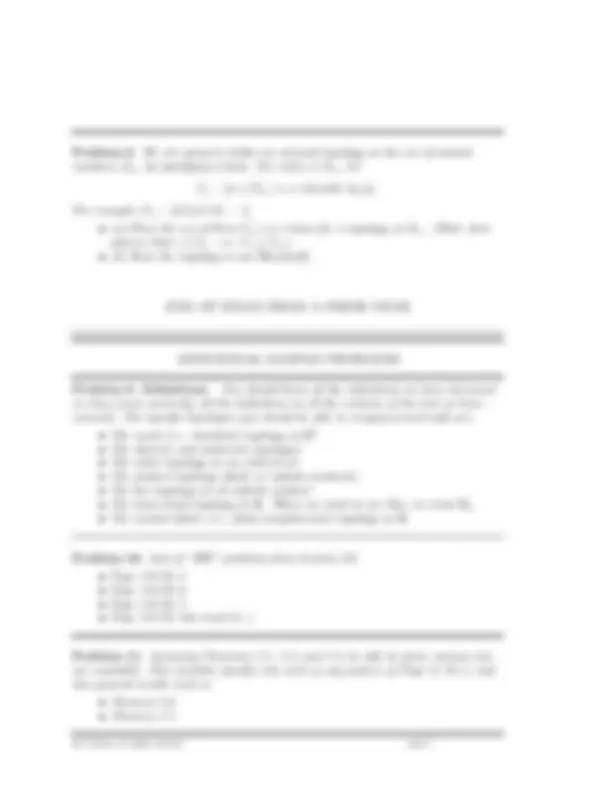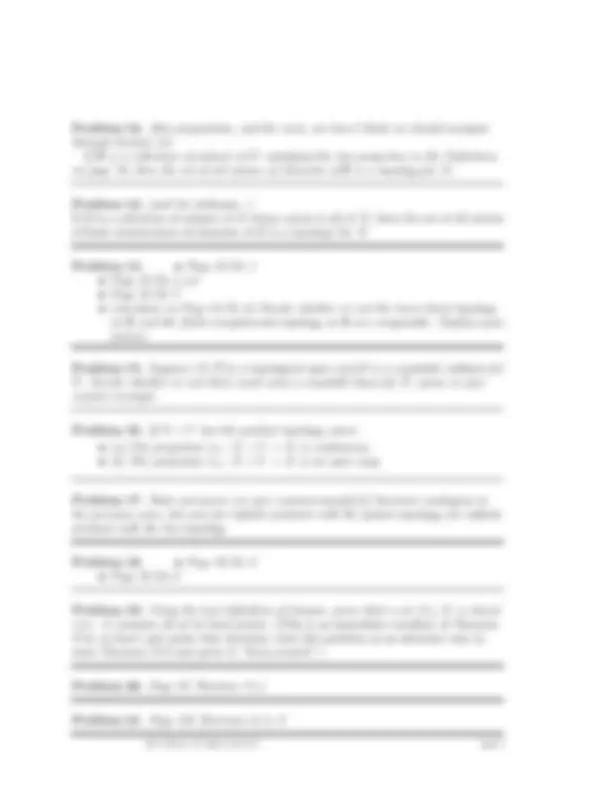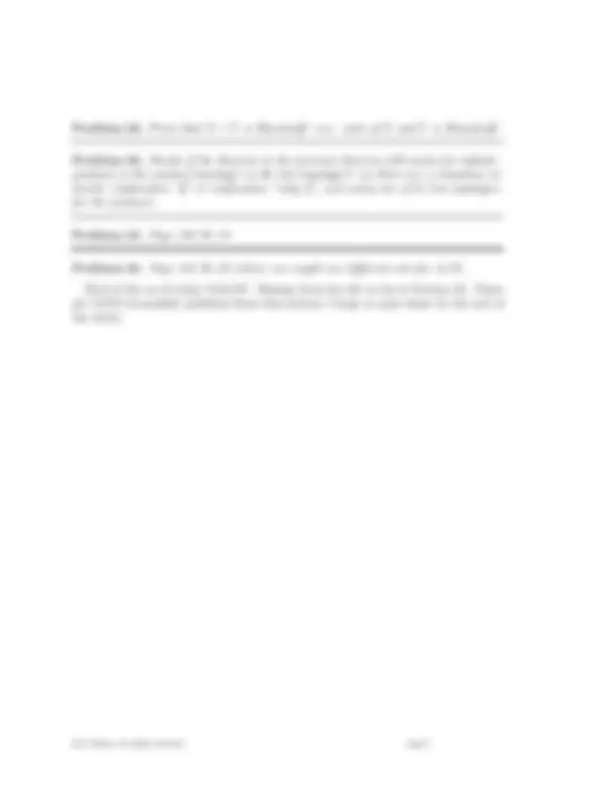





Study with the several resources on Docsity

Earn points by helping other students or get them with a premium plan


Prepare for your exams
Study with the several resources on Docsity

Earn points to download
Earn points by helping other students or get them with a premium plan
Community
Ask the community for help and clear up your study doubts
Discover the best universities in your country according to Docsity users
Free resources
Download our free guides on studying techniques, anxiety management strategies, and thesis advice from Docsity tutors
The instructions and problems for an exam in information theory. The exam is closed-book and covers topics such as countable sets, topology, and limit points. The document also includes sample problems and references to specific homework problems. Students are advised to work efficiently and to seek help if they get stuck on a problem.
Typology: Exams
1 / 5

This page cannot be seen from the preview
Don't miss anything!




22M: Fall 07 J. Simon
Instructions. This is a ”closed book” exam; you should have no books, scratch paper, or other written material available during the exam. Do all your work in the exam booklet provided. ***There are 8 problems; each is worth 10 points, so the total is 80 points.
Advice. The exam is written under the assumption that you know the material and can work the problems efficiently. So if you get stuck on something, don’t spend a lot of time on it until after you’ve worked the problems you can do more quickly.
NOTE NOTE NOTE. The first 8 problems are an actual exam I gave previously in 22M:132. For our exam, I do not expect to include the topic of ”well-ordering” (so Problem 2 below is moot). But students asked to see an ”actual” exam - so here it is.
The rest of the problems... are samples. I may send out more sample problems later (e.g. Friday or Saturday). My standard commitment is that “most of the problems on the exam will be taken from the list of sample problems slight modifications of the samples”. I reserve the right to have problems on the exam that are not represented in the samples.
Problem 1. It took some work to prove that Z, Z × Z, and Q are countable. Using these facts, and whatever general theorems you need about countable sets, explain how we know that each of the following sets A is countable.
Problem 2. Suppose X is an uncountable set with a well-ordering “<”. Show there exists a subset Y ⊆ X with the following property:
∀y ∈ Y, {s ∈ Y | s < y} is countable.
Problem 3. Suppose (X, T ) and (Y, T ′) are topological spaces. Let πX : X × Y → X and πY : X × Y → Y be the coordinate projection functions, that is
πX (x, y) = x and πY (x, y) = y.
Prove that the product topology is the coarsest topology on X × Y that makes both projections continuious.
Problem 4. Let X = Rℓ × Rℓ with the product topology. Let A = (0, 1) × (0, 1) ⊆ X.
(a) Find int(A).
(b) Find the set of limit points of A.
(c) Find A.
(d) Find bd(A).
Problem 5. Let (X, T ) be a topological space, with A ⊆ X. Prove:
bd(A) = ∅ ⇐⇒ A is both open and closed.
(Make it clear what definition or theorem(s) you are using.)
Problem 6. Let (X, T ) be a topological space, with Y ⊆ X; give Y the subspace topology TY. Here are two false “theorems”. Give counterexamples to the “theorems” as stated, and change the statements to make them valid theorems.
(a) If U ⊆ Y is open in Y (i.e. U ∈ TY ), then U is open in X.
(b) If C ⊆ Y is closed in Y then C is closed in X.
Problem 7. Suppose (X, <) and (X′, <′) are simply ordered (i.e. linearly ordered) sets. Give each set the order topology. Suppose f : X → X′^ is surjective and monotonic, that is ∀x, y ∈ X, x < y =⇒ f (x) <′^ f (y).
Show that f is a homeomorphism.
Problem 12. (this proposition, and the next, are how I think we should navigate through Section 13) If B is a collection of subsets of X satisfying the two properties in the Definition on page 78, then the set of all unions of elements of B is a topology for X.
Problem 13. (and for subbases...) If S is a collection of subsets of X whose union is all of X, then the set of all unions of finite intersections of elements of S is a topology for X.
Problem 14. • Page 83 Ex 1
Problem 15. Suppose (X, T )is a topological space and S is a countable subbasis for T. Decide whether or not there must exist a countable basis for T ; prove or give counter-example.
Problem 16. If X × Y has the product topology, prove
Problem 17. State and prove (or give counterexample[s]) theorems analogous to the previous ones, but now for infinite products with the poduct topology; for infinite products with the box topology.
Problem 18. • Page 92 Ex 8
Problem 19. Using the text definition of closure, prove that a set A ⊆ X is closed ⇐⇒ A contains all of its limit points. (This is an immediate corollary of Theorem 17.6, so don’t just quote that theorem; view this problem as an alternate way to state Theorem 17.6 and prove it “from scratch”.)
Problem 20. Page 95 Theorem 17.
Problem 21. Page 101 Exercises 6, 8, 9
Problem 22. Prove that X × Y is Hausdorff ⇐⇒ each of X and Y is Hausdorff.
Problem 23. Decide if the theorem in the previous theorem still works for infinite products in the product topology? in the box topology?? (so there are 4 situations to decide: implication “if” or implication “only if”, and using one of he two topologies for the product).
Problem 24. Page 102 Ex 19
Problem 25. Page 102 Ex 20 (where one might use different sets for A, B)
[End of list as of today 9/24/07. Missing from the list so far is Section 18. There are LOTS of possible problems from this section; I hope to post those by the end of the week.]